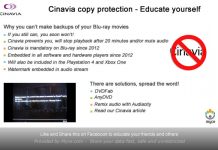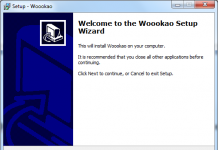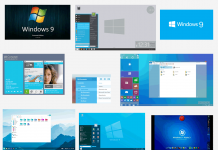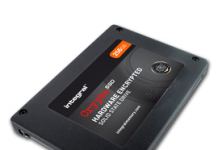
A dual layer DVD is a DVD that contains two layers of data. Pressed dual layer DVDs (like movie DVDs '“ DVD-ROM - you purchase in a store) have been on the market for quite some time now, but recordable dual layer DVDs are not available yet. Current DVD recordables can contain up to 4.7 Gigabytes of data, a dual layer DVD recordable could contain up to 8.5 Gigabytes.
Recently Philips Research announced the feasibility of dual layer DVD technology and their announcement was quickly followed by an announcement of competitor Pioneer in which they announced that they were also planning to bring dual layer DVD technology on the market. Although the technology might be (partly) ready, it will take some time before it will be widely available on the consumer market.
The announcements raised many questions by our visitors. For more information on the dual layer DVD recordable formats we contacted both Philips and Pioneer
Background
In order to be able to understand the story you first might like to know that currently there is a DVD recordable format race going on. In the CD recordable days you could just purchase a CD-R and burn it, in the DVD recordable era this has changed. Currently there are three recordable DVD formats, DVD-RAM, DVD-RW and DVD+RW. DVD-RW is mainly developed and promoted by Pioneer while DVD+RW is mainly developed and promoted by Philips. If you want to burn a DVD+R disc you will need a DVD recorder that is able to write this format and for DVD-RAM and DVD-RW the same applies. Some companies though, offer drives that support multiple formats.
The dual layer format has once again shown that the format fight is not over. DVD-RAM is no longer seen as a real competitor on the PC DVD recorder market and the battle is mainly between DVD-RW and DVD+RW. Knowing this, it's not strange that both companies/formats have announced the dual layer recordable DVD right after each other.
The Technology
Simplified, a DVD recordable contains a layer of a chemical substrate that is hit (burned) by a laser. The laser creates small holes in this chemical substrate. This way it creates so called pits and lands, for normal PC users better known as 1's and 0's. A dual layer contains two layers of this chemical and by adapting the laser intensity both layers can be written. Of course this is a very complicated process and requires a lot of precision and the right materials to make sure that after the data has been burned, it can still be read back without errors.
Reading back has been the biggest challenge in development of the format, as current DVD players were not designed to read back dual layer DVD recordable discs. However they are able to read back pressed (DVD-ROM) dual layer discs, so the developers have been focusing on making the DVD recordable compatible with the DVD-ROM dual layer discs.
The (near) future
We asked both Pioneer and Philips for more information regarding this matter. For completeness of this article we should add that only Philips has really demonstrated the technology. Until now nobody has seen anything from Pioneer outside their Research and Development labs. As where Philips says they will release products in the first half of 2004 and already has announced real life products, Pioneer has only announced they're working on the technology, but told us that they hope to ship products within the year 2004. Also the introduction speed of Pioneer is unknown; Philips could be more specific and told us that the first generation of dual layer writers will write the discs at 2.4x.
Philips has another advantage as it jointly developed the technology with Mitsubishi Kagaku Media (better known by its Verbatim brand). Pioneer has no media partner but Mr Yoshimura from Pioneer Business Planning told us: 'Our next step is to propose this technology to the DVD-forum. During technical discussions at the DVD-Forum all technical information will be provided to attendees. So once passed, major media manufacturers will be able to produce dual DVD-R discs easily". This is also the road Philips is going to take, but it will make its technology available to the DVD+RW alliance members. The company expects to finalize the specifications in December 2003; Pioneer could not disclose any date.
Pricing
One important issue will of course be the pricing of the media and hardware. According to Philips the production of the media should not be much more complicated than the production of current dual layer DVD-ROM discs. Mrs. Harpe of Philips Consumer Electronics says: 'It's too early to be specific about prices. However, we can say that the production process of dual layer DVD+R is similar to DVD9 production." Philips could not tell us if the prices of the media will also be similar, but according to the company the prices should become available closer to introduction date. We asked the same question to Pioneer. 'It is a little bit early to discuss the price of technology that is under development. But a reasonable price of dual layer DVD media will be double price of single DVD media at initial stage." said Mr. Yoshimura.
Besides the dual format DVD+R and DVD-R formats, there will likely also be a market for rewritable formats. Both companies have told us that also dual layer rewriteable discs are in development. Philips expects to have this kind of media available later this year. Pioneer also expects to release dual layer DVD-RW but also sees some problems. Mr. Yoshimura explains: 'From a technical point of view it is no problem to develop dual layer DVD-RW media. But reflectivity of dual DVD-RW media should be half of existing dual DVD-ROM media. This means that existing DVD players/drives read compatibility will have a problem."
Knowing this it could be that dual layer rewriteable discs will face some compatibility problems. Currently the single layer rewriteable formats also face the lowest compatibility numbers. Philips is however clear about compatibility; 'The dual layer DVD+R will be compatible with existing DVD Video and DVD ROM players: current expectation is at least as compatible as DVD+RW discs are". Pioneer expects that its dual layer discs will have the same compatibility as current DVD-R discs.
Compatibility on the reading side of dual layer write once formats should be about the same as single layer write once formats, but what about writing? Will our current DVD recorders be able to record on dual layer media?
According to Philips it is very likely you will need to purchase a new DVD recorder: 'It is likely that new hardware (such as ICs) will be required in the final product to accommodate variations in media and drives from different vendors. At this time, we can say with certainty that 4x, 2.4x and 1x drives lack the requisite laser power to burn a double layer DVD+R disc.", said Mr. Driessen from Philips Optical Storage Communications in a recent mail to us. Philips did introduce a prototype on a modified 8x DVD+R burner but expects that to ensure compatibility with media of more manufacturers a new DVD recorder will be needed. Pioneer thinks about a firmware upgrade: 'Current DVD recorder/writers can not recognize blank dual DVD-R media due to media recognition. To add write function to dual DVD-R media, additional firmware sequence is required."
Disadvantages
Although dual layer DVD recordable discs have not even been introduced yet we can be sure that there will be a large market for the products. Our expectations are that once the technology has matured it will likely become cheaper and more reliable and it will likely go the same way as single layer discs. The entertainment industry might dislike the dual layer technology as it allows consumers to create backups of DVD movies without reducing the size of the movie, as is currently needed. Current movies, most of the time, do not fit on 4.7 GB discs and consumers need to go through some trouble to make backups. Dual layer DVD discs will completely change this.
A disadvantage seems to lie in the fact that the compatibility of the discs is rather low. Although it's still reasonable, the dual layer discs are not 100% compatible and thus it will lead to consumer annoyance. We hope that the companies will be able to increase compatibility as the technology progresses. We were also concerned about the safety of the discs as we wondered if the data on a dual layer disc would be of the same quality as on a single layer disc. Both companies assured us that the same quality standards apply to dual layer discs as for single layer discs.
The technology sounds promising and it's clear that both companies have spent a lot of Research and Development time in the dual layer DVD format. However Philips could be more specific about release dates, compatibility and the technology. We expect that Pioneer will need to work hard to keep up with Philips. The future will tell is this will be as a big success as the current single layer DVD recordable.










